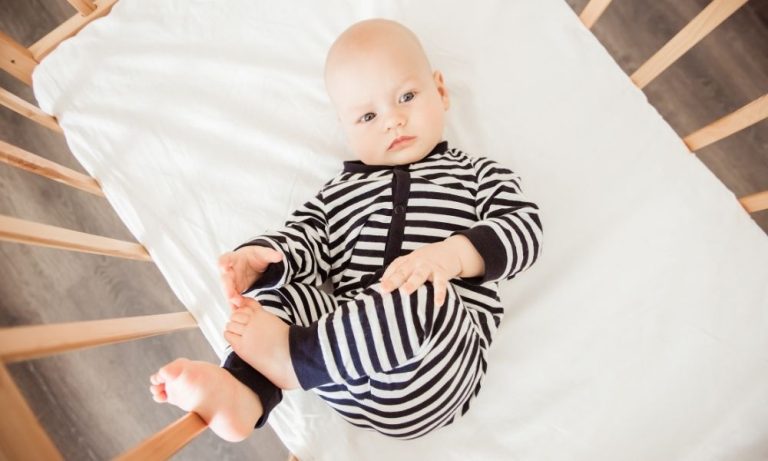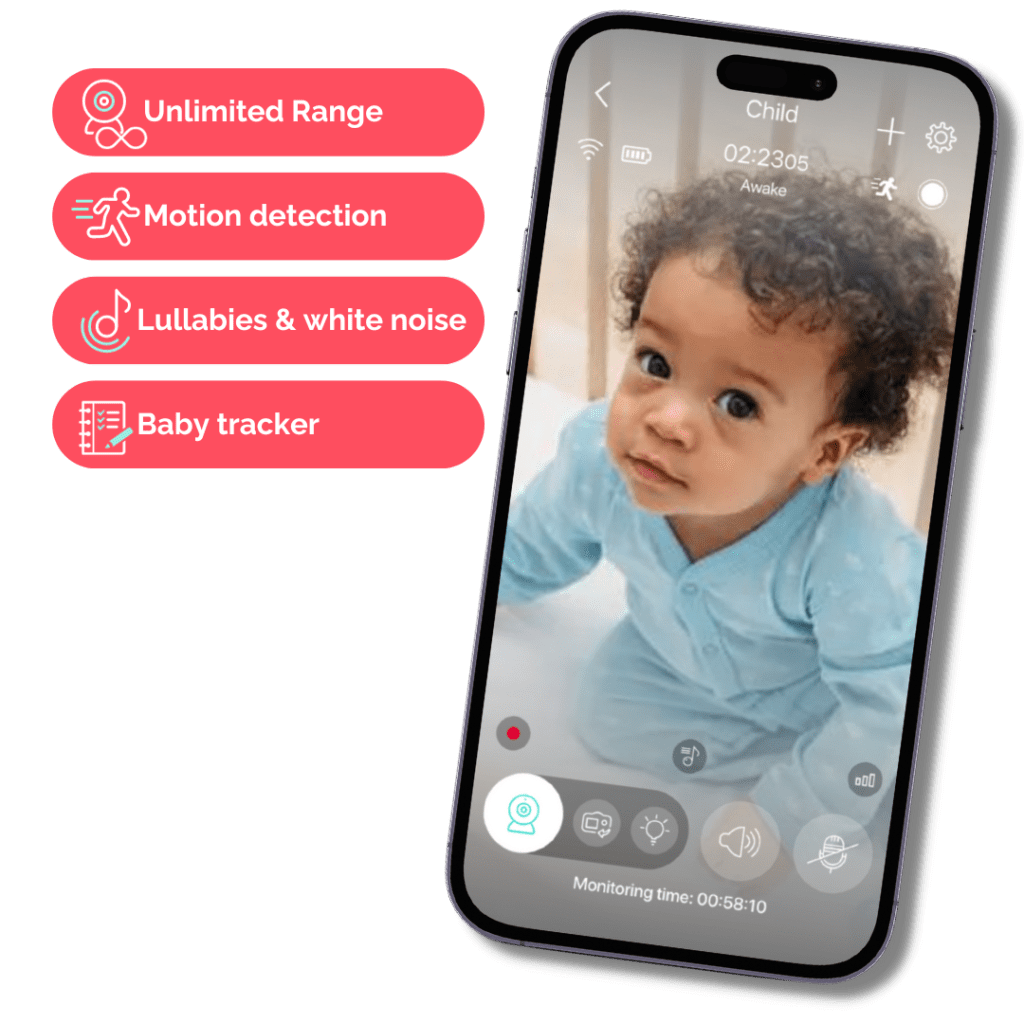
Mini Crib Vs Regular Crib: Which is Best for You and Your Baby?
- Created:
30. 3. 2023 - Updated:
10. 1. 2024
As you know:
Babies need all their comfort; cribs help provide much of it. That’s why they’re one of the first items parents buy when expecting a child.
But:
Before buying a crib, you must decide whether you want a mini or a regular one for your baby. Both cribs are closely related, but they also have some noteworthy differences.
In this article, I’ll review these differences to help you make the best choice for you and your little one.
Mini Crib Vs Regular Crib: A Quick Comparison
Mini cribs are best for parents looking to save space. They’re smaller, come in different sizes and don’t have a general standard. Mini cribs are portable, ideal for parents with twins and cost less. Regular cribs are best for large spaces. They all come in the same sizes and are required by law to meet certain standards.
Differences Between a Mini Crib and a Regular Crib
As the name suggests:
Mini cribs are smaller than the regular or standard ones, typically measure between 24 inches wide (60, 96 cm) and 38 inches (96, 52 cm) in length.
In terms of weight:
Unsurprising that mini cribs typically weigh less than regular ones as they’re smaller.
Also:
Unlike standard cribs with uniform legal requirements in size, mini cribs come in a variety of measurements. Some are just a little smaller than the standard cribs, while others are much smaller.
And as for standard cribs:
They’re the classic sleeping space for babies and are a lot more popular than the mini ones. By law, standard cribs must meet the following requirements:
- 28 inches (71, 12 cm) wide and 52 ⅜ inches (132, 08 cm) long
- The bottom of the mattress must be 6 inches off the ground
- And the top of the rail, measured from the crib mattress must be 20 inches high
That said:
Let’s review the full differences between both cribs.
Ideal Usage
Fact:
You can use a mini crib in any space– big or small, but it is mostly for people looking to make the most of a small space.
If your baby has a small nursery, Using a mini crib to reserve some space for other important things will be ideal.
Also:
A mini crib may be ideal if you have twins or your baby has to share the room with you or their siblings. They’re much smaller than standard cribs, so they’ll take up less space.
On the other hand:
You can only use a standard crib in a nursery or room with ample space; putting it in a small room can hinder movement.
Duration of Use
Mini cribs are durable and can last as long as your child can fit in them. In other words, they’ll last until they can no longer contain your child in height and weight.
When this happens, you must transition them to a toddler bed.
Now:
The question you should ask is, “when will your child outgrow their mini crib?” This assumes you have a mini crib measuring 38 inches long and 45 pounds weight limit.
Well:
According to the Cincinnati Children’s Hospital and Medical Center, children typically reach the above length and weight at about four years of age.
Of course:
You won’t wait until your child completely outgrows the mini crib. So, it is best to transition them when they’re between the age of two to three years.
As for the regular cribs:
It is the same thing. Sleep Foundation notes that toddlers should be transitioned from their cribs to a bed between 18 months and three years.
Portability
Ever tried moving a standard crib between rooms? If yes, you know it’s never an easy task. However, moving a mini crib around is always hassle-free.
What’s more?
Many brands now add wheels to their mini cribs, making it a lot easier to move around. Some mini cribs are foldable; parents can bring them along for a family vacation or trip.
This is especially important as babies usually develop anxiety when away from home or a familiar environment. But the crib can help restore some cosiness.
Note:
Always ensure the wheels lock in place when you’re not moving the crib around. This provides a more stable foundation for the crib and ensures you don’t endanger your baby.
Bedding and Sheets
As already mentioned:
Mini cribs come in different sizes, so finding the right bedding and sheet can be a little difficult. You’ll have to buy sheets and bedding sewn to fit your crib.
However:
The case differs for standard cribs, which all use the same sheets and bedding size. So even if someone is getting one for you, you won’t need to bother about the size as it’s the same size for all standard cribs.
Weight Limit
The average 24 inches wide and 38 inches long mini crib can have a weight limit of about 45 pounds, just over 20kg.
Typically:
It takes children about 4 years of age to reach 45 pounds, so that is a lot of time to use the crib. They would have also moved from the crib long before that time.
Remember:
Depending on the sturdiness, other mini cribs can also have a higher or lower weight limit.
Standard cribs average a weight limit of about 50 pounds or 22 kg. As expected, this is higher than a mini crib.
Now:
Weight limit isn’t one of the legal requirements of standard cribs. So it may also vary from crib to crib, depending on the brand.
Price
As expected:
Mini cribs are generally less expensive than standard ones. A quick search on Amazon shows that a Dream On Me mini crib sells for about $120.
On the other hand:
A Delta Children crib sells between $188 to $219; one might call that a significant price difference.
Annie’s Recommendation
To tell you the truth:
Mini cribs aren’t bad at all as long as your baby is comfortable inside. On the upside, they’re more portable and cost less than regular cribs.
However:
They’ll always serve as an alternative. I say this because parents who can afford homes with large nurseries and spaces for their kids would always go for standard cribs.
They have safety requirements that manufacturers must meet before being approved for production and distribution.
Even if you have a set of twins, you’ll likely go for standard cribs if you have ample space for both cribs.
So:
My recommendation is pretty clear here. Go for a standard crib as it is the one recommended by law.
You’ll also get an added advantage. You won’t need to worry about the size of the bedding and sheets since standard cribs all come in the same size.
But…
If you live in a small space where your baby’s nursery isn’t big enough, you should consider a mini crib.
Final Tip: Annie Baby Monitor – Your Watchful Companion in the Nursery
Watching over your little one when they start sleeping on their own is important.
You can easily do that by placing a monitor in their nursery. With Annie’s real-time video and audio monitoring, as well as cry and motion detection, you can always stay connected with your child, which will give you peace of mind and give you peace of mind.

Looking for a top-notch baby monitor? Look no further than Annie Baby Monitor. It’s the perfect solution for keeping tabs on your little one. Check it out now.
Conclusion
Mini cribs and regular cribs are the two options to choose from when shopping for a crib for your baby.
Here’s what to know about both cribs to help you make a better decision.
- Mini cribs are smaller than regular cribs
- They come in various sizes and don’t have a general standard
- They’re ideal for parents who want to make the most of small spaces
- They’re also best for parents with twins
- Babies can use mini cribs until they’re between 2 to 3 years of age
- Mini cribs have an average weight limit of 45 pounds
- Mini cribs are portable and significantly less costly than standard cribs
- Regular cribs are ideal for nurseries with ample space
- They have a uniform size and are required by law to meet certain standards
- Babies can use regular cribs until they’re between 2 to 3 years of age
- Regular cribs have an average weight limit of 50 pounds
- Regular cribs are more expensive than mini cribs
And that’s it:
That’s everything there’s to know about mini and regular cribs. Hopefully, you can now make the best decision for you and your child. One more thing; ensure you reach us via the comment section below if you have any questions. You’ll receive a response ASAP.
Frequently Asked Questions About Mini Crib Vs Regular Crib
The main difference between a mini and a regular crib is size. Mini cribs are smaller versions of regular ones. Other differences are also offshoots of the difference in size. For example, mini cribs are best for small spaces, while regular cribs are best for large spaces. Mini cribs are also portable, while regular ones aren’t.
A baby can stay in a mini crib until they’re between the age of 2 to 3 years. After this time, they must be transitioned to a bed or toddler bed.
An average mini crib measures 24 inches in width (60, 96 cm) and 38 inches (96, 52 cm) in length. A regular crib measures 28 inches (71, 12 cm) in width and 52 ⅜ inches (132, 08 cm) in length. This shows that a regular crib is about 4 inches wider and about 14 inches longer than a mini crib.
The American Academy of Pediatrics (AAP) recommends babies sleep in a bassinet in their parent’s room for the first six months. After this time, you can move them to a crib in their nurseries or beside your bed.






